The W1 is McLaren’s fastest and most powerful road car to date, showcasing innovative features like 3D-printed suspension and a shape-shifting body, which adds depth beyond its remarkable performance.
McLaren reserves its prestigious ‘1’ badge for its most advanced and exhilarating vehicles. In the last three decades, only two models— the legendary F1 and the revolutionary P1—have received this honor. Now, with the introduction of the W1, McLaren has created a car that makes even the formidable P1 seem relatively subdued. The W1 excels in design, cutting-edge technology, and its ability to generate G-forces so intense that they can nearly compress your insides.
For an in-depth look at the W1, including its power, performance metrics, and what sets it apart in the hypercar arena, be sure to check out our comprehensive article. However, the W1 is such a finely engineered and intricate vehicle that it’s easy to overlook some of its more intriguing and unique features. Below, we highlight 12 important details you may have missed about the McLaren W1.
#1 3D-Printed Suspension
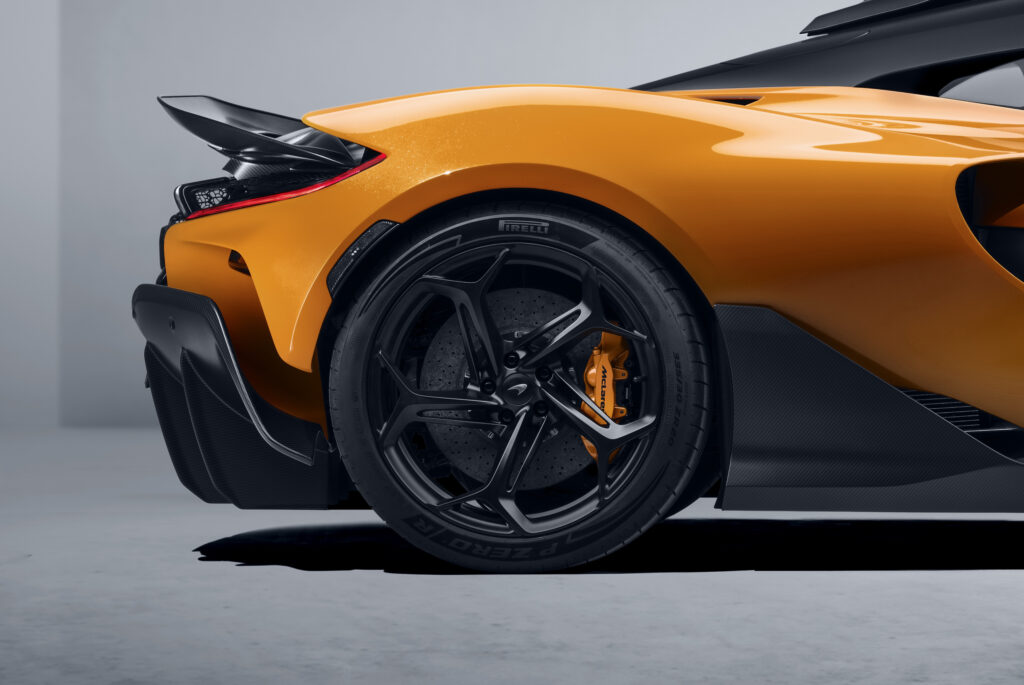
Several automakers have been utilizing 3D printing for some time, primarily for lightweight trim pieces. However, a more advanced method known as additive manufacturing is now being employed for critical and safety-related components. Similar to the Bugatti Tourbillon, the McLaren W1 incorporates 3D-printed suspension components, specifically the wishbones and uprights. And rest assured, these parts are made of metal, not plastic like those DIY home-printed Star Wars figures your friend has.
#2 Starter Button On The Roof
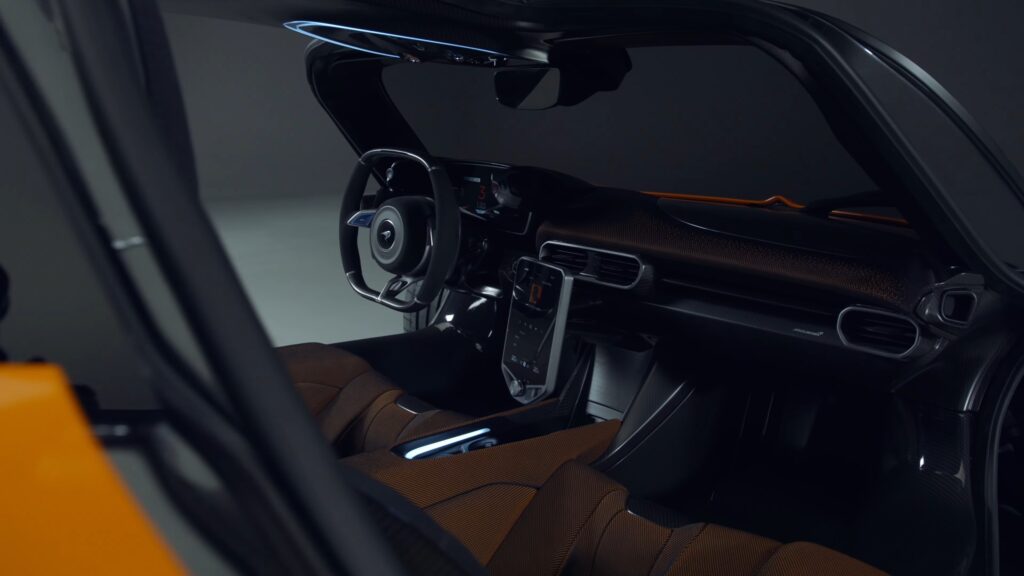
Aside from a handful of hypercars, such as the Bugatti Tourbillon, the only competitors that can match the W1’s speed on a runway are fast airplanes. Thus, it’s fitting that McLaren has designed an aircraft-inspired overhead console to accommodate the engine start button, Race mode switch, and electric window controls.
#3 What The Hell Is An Anhedral Door?
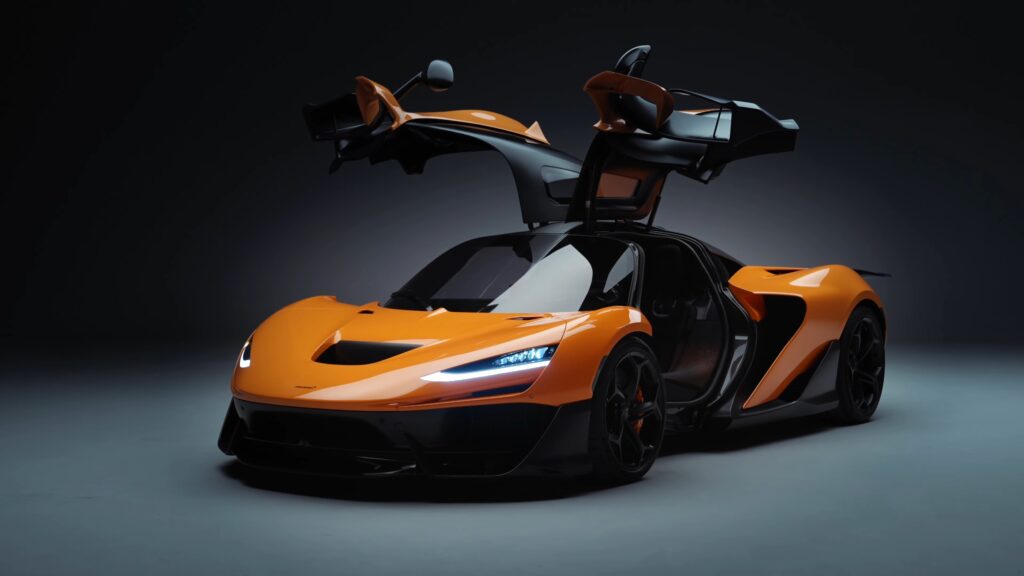
Dihedral doors have been a defining feature of every McLaren model since the F1, which debuted 30 years ago, but the W1 features gullwing doors instead. In typical McLaren fashion, they have rebranded them as “anhedral” doors, a term borrowed from aviation that describes the angle of an aircraft’s wings.
By relocating the hinge to the roof, McLaren has created more space at the front edge of the door, improving airflow along the sides of the W1. Interestingly, McLaren asserts that this design choice gives the W1 a resemblance to this year’s MCL38 Formula 1 car.
#4 E-Reverse
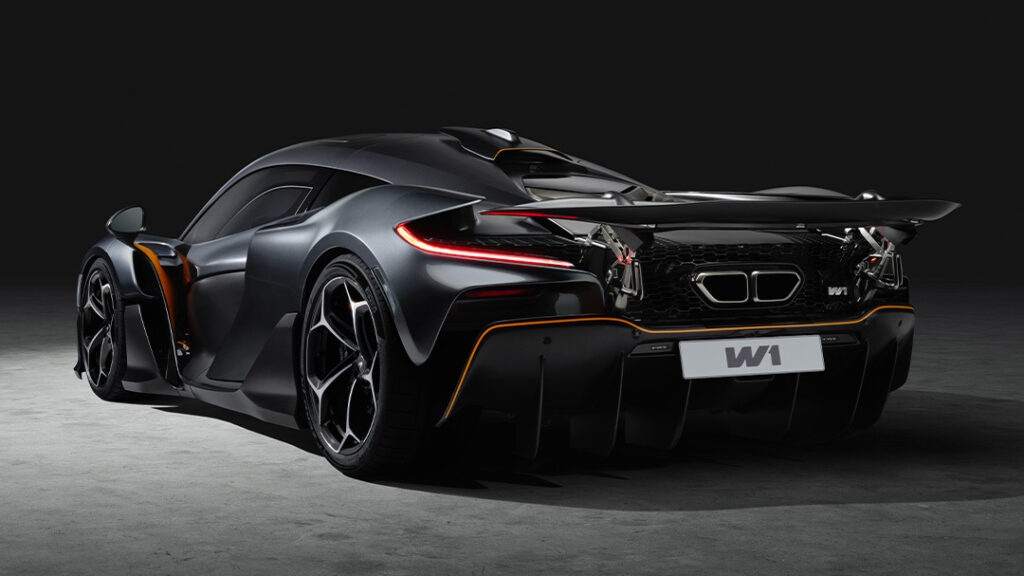
The W1 has an eight-speed dual-clutch transmission, instead of the seven-speeder in the old P1. But one other major difference is the new car uses electric power, not the V8, when the driver needs to back up. We’ve seen E-reverse before on the Artura, as well as Ferrari’s AWD SF90, but in the Italian supercar the front-electric motors did the reversing – the two-wheel drive McLaren applies backing-up torque to its rear wheels.
#5 Hydraulic Power Steering
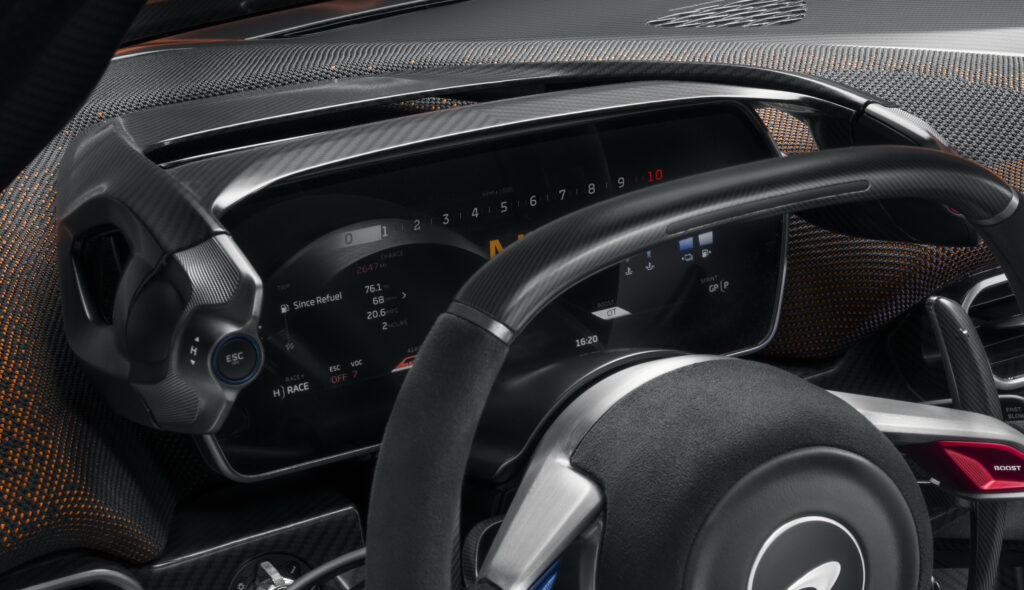
The standout feature of the P1 may not have been its exhilarating straight-line speed, but rather the pure, unfiltered steering feel transmitted through its hydraulically-assisted rack. While it’s not entirely accurate to claim that all electric steering lacks quality—the P1’s competitor, the Porsche 918, featured EPAS and provided excellent feedback—McLaren has opted to retain hydraulic assistance for the W1. This decision ensures that the W1 offers a level of communication that drivers won’t find in any other vehicle.
#6 Fixing The Seats Made The W1 Shorter
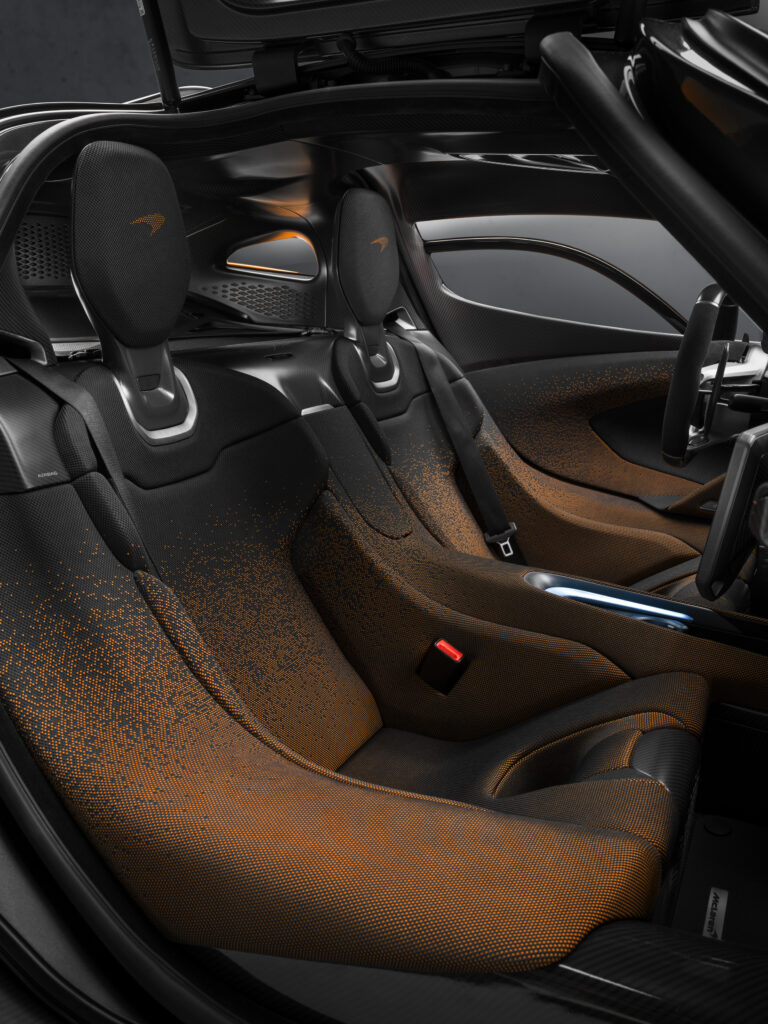
The W1 gets bigger when you get excited, the active ‘Long Tail’ rear wing extending by a massive 11.8 inches (300 mm) when Race mode is engaged. But fixing the seats into the monocoque means the W1 is 71 mm (2.8 inches) shorter than it would have been if it was equipped with a traditional sliding chair.
Like the P1’s old LaFerrari nemesis and the new Bugatti Tourbillon, the W1 features a moveable pedal box to help the driver get comfy. And McLaren says the raised footwell makes drivers feel like they’re in a Le Mans prototype.
#7 Only Two Buttons On The Steering Wheel
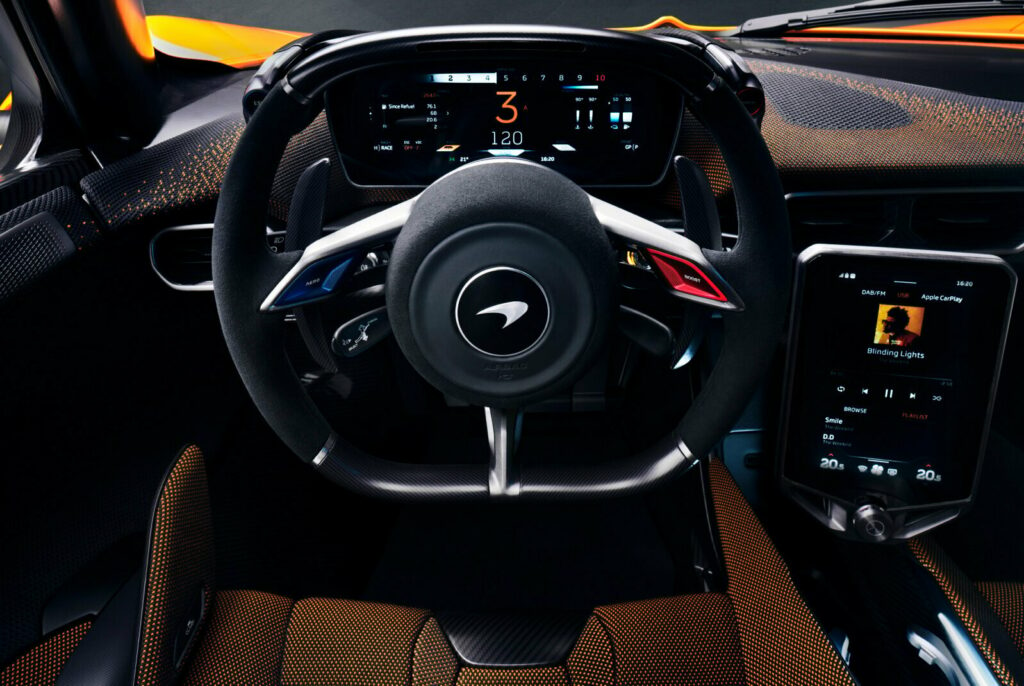
The W1’s press materials are filled with references to McLaren’s Formula 1 achievements and technological synergies, but the designers have chosen to diverge from the F1 influence in one key area: the steering wheel.
Unlike McLaren’s competitors, such as Aston Martin and Mercedes, who clutter their hypercar steering wheels with numerous buttons, the creators of the W1 have opted for a more streamlined approach. They have included only two F1-style switches: one for an instant E-Boost function and another to activate the Drag Reduction System (DRS).
#8 Wafer-Thin Carbon Sun Visors
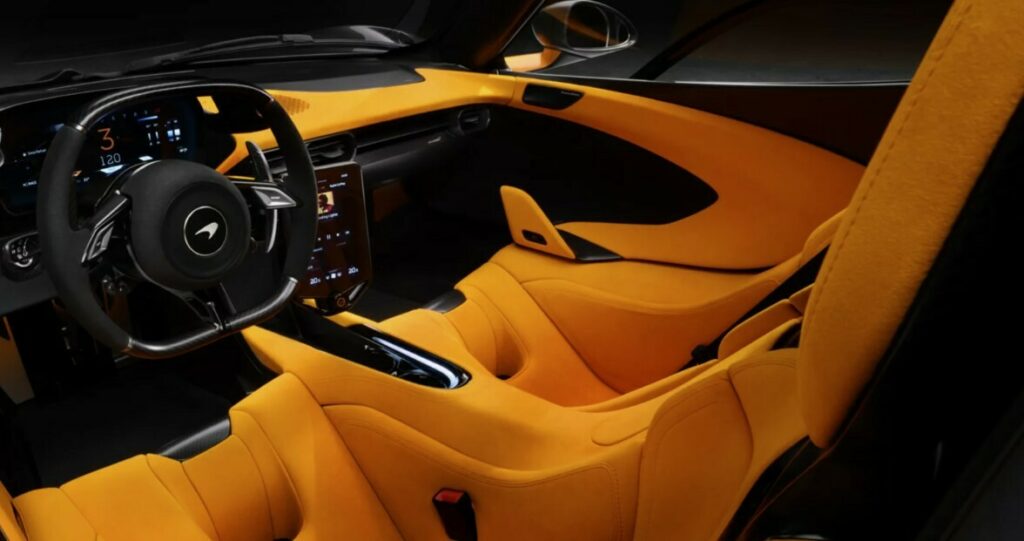
McLaren’s commitment to minimizing unnecessary weight extends even to the sun visors, which are a mere 0.1 inches (2.74 mm) thick—equivalent to the thickness of three credit cards. Made from carbon fiber, similar to Visa’s old Black Card and much of the W1’s construction, these visors exemplify the brand’s focus on lightweight design.
While reducing the thickness of the sun visors didn’t drastically alter the hypercar’s overall mass, it contributed to McLaren achieving an impressive vehicle weight of 3,084 lbs (1,399 kg) without fluids. For a more realistic curb weight figure, you can add 220 lbs (100 kg), but the total remains noteworthy, just a few pounds heavier than the 400 hp (406 PS) Lotus Emira.
#9 No Trunk, But Space For Helmets
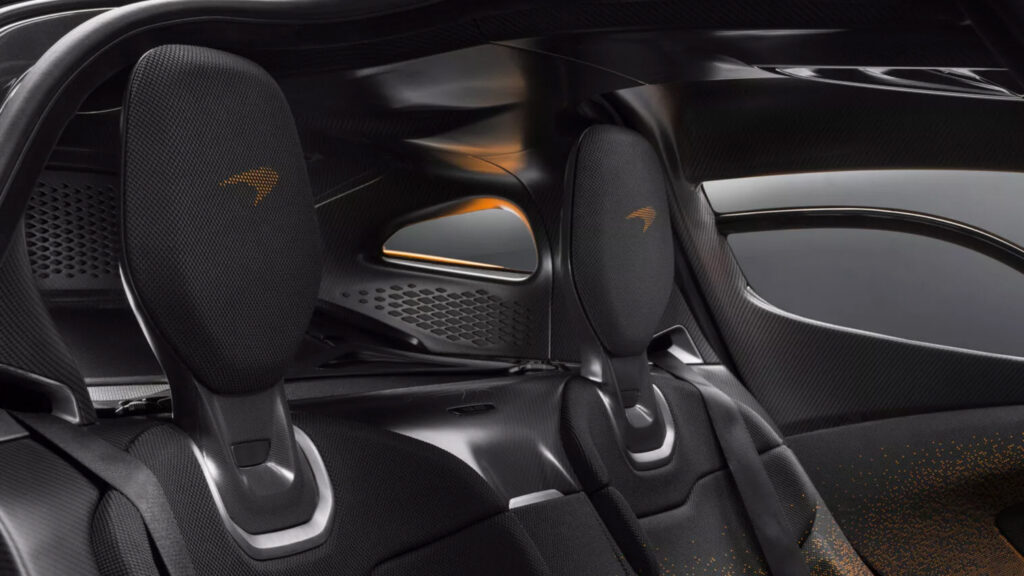
Cargo space isn’t a primary concern for vehicles like the W1, which are typically used for shorter drives rather than long journeys. However, there is one essential item that owners might need: a helmet. The W1 lacks both a front trunk (frunk) and a rear trunk, but McLaren states that there is enough space for two helmets or a couple of weekend bags on a platform located behind the seats, accessible by folding down the headrests.
#10 Shares Tech With Huge SUVs
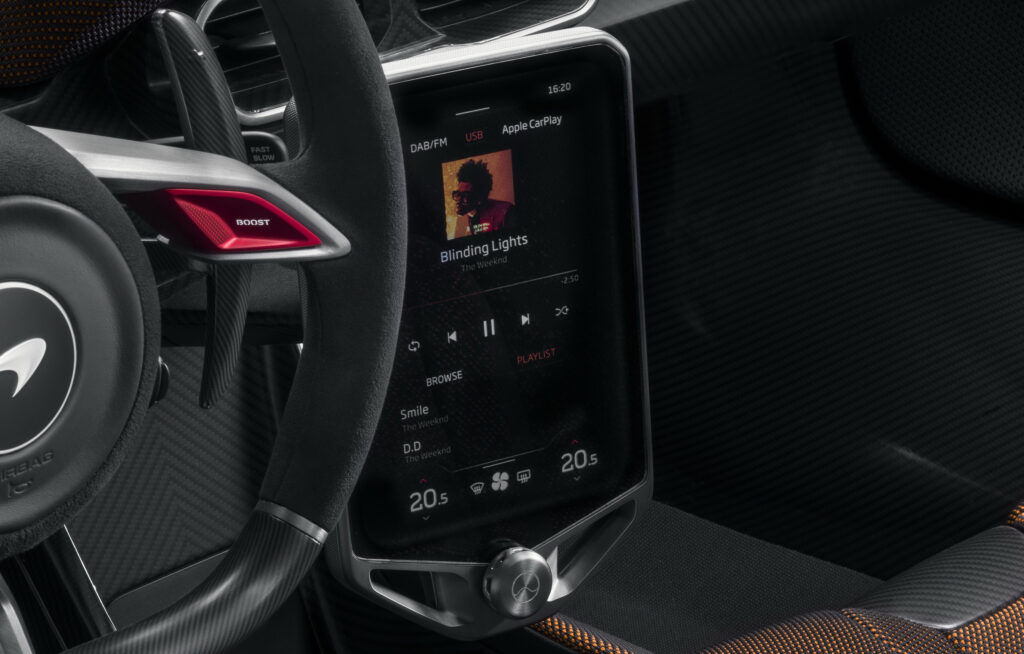
Years ago Lotus found itself in the absurd position of being legally required to fit the Exige with a rear-view mirror even though it showed nothing because the supercharger blocked the view. Since then, digital rear view mirrors have arrived to solve such problems. They’re great for SUV buyers who like to load up their trucks for camping trips, and now the W1 uses the same tech to help drivers see behind – and even includes a chunk of rear wing in the digital view to help place the car. Or just massage the owner’s ego.
#11 Same Capacity, But New V8
While the W1 shares a 4.0-liter displacement with the 3,994 cc M840T V8 found in the 750S, its 3,988 cc MPH-8 engine is completely new, featuring a slightly narrower bore and longer stroke. With a rev limit of 9,200 rpm—compared to the 8,500 rpm of the older 750S—this engine makes the W1 McLaren’s most high-revving road car engine to date. Additionally, the new V8 replaces the traditional externally-mounted crankshaft damper with an internal viscous damper that includes active cooling, enhancing its ability to handle excursions to the redline.
#12 Even The engine Is Aerodynamic
Every surface of the McLaren, from the roof to the underbelly, has been meticulously optimized for aerodynamics. Even the engine’s positioning underwent careful consideration, with Woking’s engineers tilting it at a 3-degree angle to enhance the overall airflow performance of the W1.
GET MORE RELATED CONTENT ON LIFESTYLEROOM.NET

